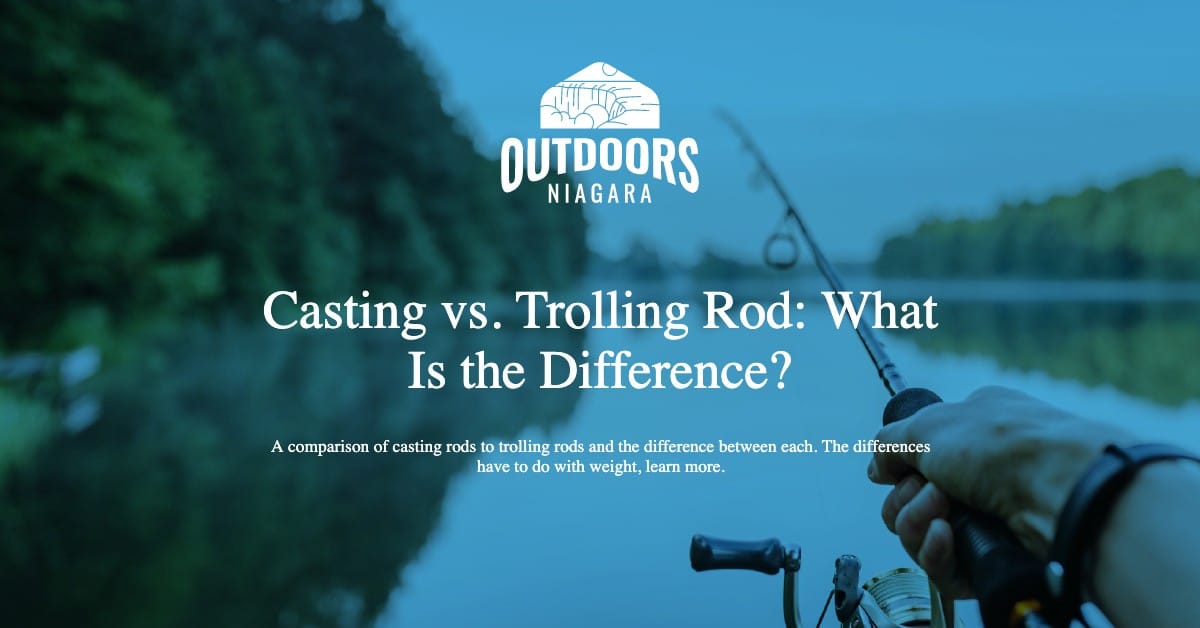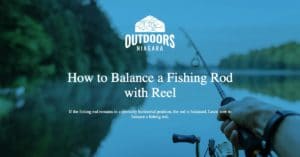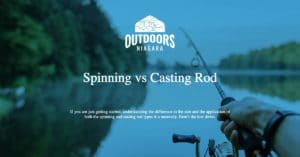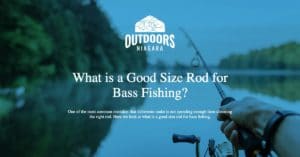Different fishing environments require that anglers use different types of fishing rods.
An example is a fly-fishing rod, which is used specifically with casting flies.
Read more: How to Practice Casting A Fly Rod
While you could fish another type of rod in the same fishing environment, you would not be very successful if you used a different type of rod to cast flies.
Those differences have to do with the design of the rod, the reel, and the line setup.
This article compares casting rods to trolling rods and goes into the difference between each.
Contents
What Is a Casting Rod?
A casting rod has many applications. We set them up with a baitcasting or spincaster reel.
From there we choose the action and weight of the pole to also match where we fish and the fishing targets.
The big difference with a casting rod is the eye or line guide position when the fishing rod is bent over, such as when battling a fish, is upwards.
Most other types of rods when bent over, have eyes or line guides that face downward.
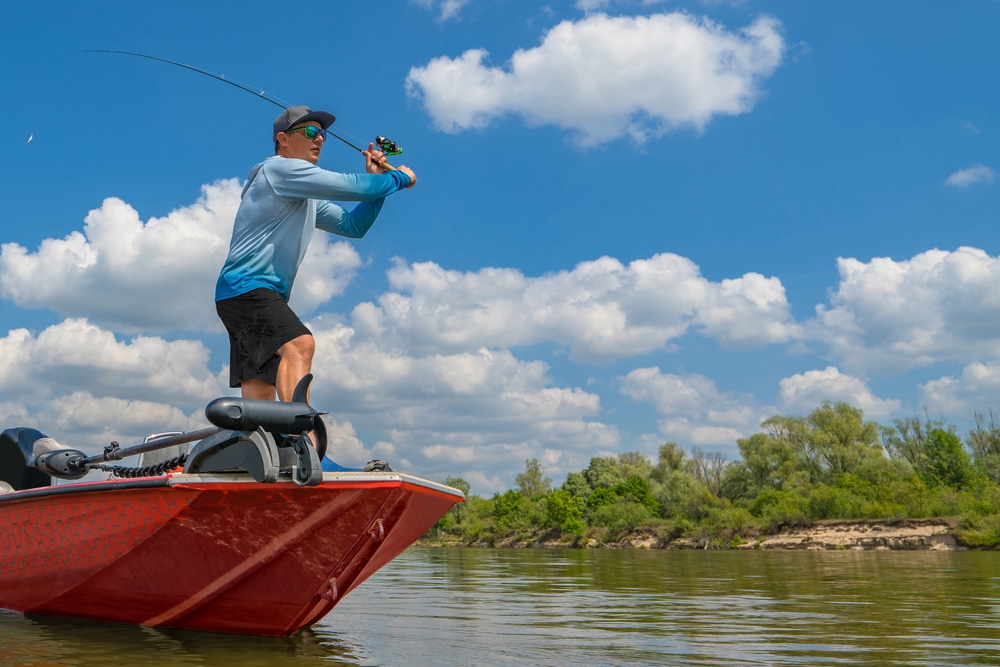
What is it used for?
You can use a casting rod with a hook and leader or with a lure.
They are applicable in many fishing situations and for a long list of fishing styles, such as using a bobber, bait, or lure.
A baitcasting rod ranges from light fishing applications to offshore fishing applications.
If using a casting rod in a light-weight fishing application, such as bobber fishing for small trout, bluegill, or panfish, then you can use either a baitcaster or spincaster reel.
A lot of people use the terms interchangeably, and that is not exactly correct.
There are differences between a baitcaster and spincaster reel that mostly have to do with weight.
If fishing in a more demanding environment, such as ocean fishing – near shore of in deeper water – a baitcaster reel is more appropriate.
What Is a Trolling Rod?
A trolling rod is designed and used to fish when the line is dragged behind a moving boat.
Trolling or Trawling moves your bait or lure through the water at a specific depth to attract or target certain types of predatory fish, such as tuna or salmon.
Generally, a trolling rod is medium weight, medium-heavy, or heavyweight.
The rod must be capable of dealing with the sudden weight of a big fish against the speed or movement of a boat.
That is a lot of impact, so trolling rods are usually heavier than baitcaster or casting rods.
The trolling reel is also much heavier and capable of handling higher drag settings, line thicknesses, and a variety of lines, including braided line.
That is one of the biggest differences between a trolling rod and a casting rod – the drag settings.
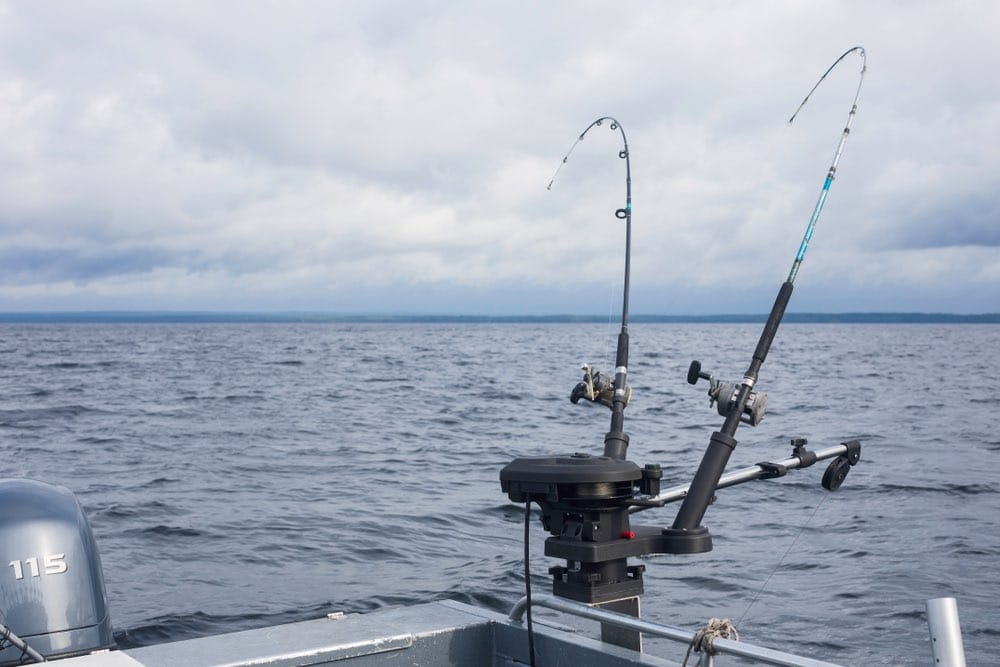
What is it used for?
Trolling rods have one use – to drag a line with bait or a lure behind a moving boat.
They are used in freshwater or saltwater and can handle a range of line sizes and line types.
Overall, these are the best option when targeting big fish while trolling. By big, we mean Marlin, Tuna, Yellowtail, Cobia, etc.
What are the differences between a casting rod and a trolling rod?
Action and weight are two differences.
A casting rod comes in a much wider array of power, weight and action than a trolling rod will.
That is because you need to have different types of power, action, and weight to feel and handle fish of different sizes.
A Trolling rod is specialized and has a limited application. It is, in a sense, the best tool for the job when that job is to target larger fish while trolling.
A casting rod is usually much more sensitive and while they can be used for saltwater fishing, the reels tend to limit their application there based on the amount of drag you can apply to a baitcaster reel.
A casting reel would not hold up for saltwater fishing for long.
When to use casting and when to use trolling rod?
They are generally used for smaller fish in freshwater settings – small trout, small bass, panfish, crappie, etc.
A baitcasting reel can hold larger line and when set up accordingly you would not have a problem handling small to medium-sized fish in salt or freshwater – smaller bonefish, reds, salmon, bass, trout, etc.
A trolling rod is your best option for trolling situations.
You would set up the rod according to what type of fish you wanted to target – salmon vs. marlin.
What are the pros and cons of a casting rod vs trolling rod?
A pro of a casting rod is that they are available in various sizes, weights, power, etc.
They have applications for different types of fishing settings – freshwater or saltwater depending on the type of reel you use.
A con for casting rods is that they are not applicable to big, trophy fish, such as tuna or marlin, and they would not hold up well for trolling for bigger fish.
A pro of trolling rods is that they are designed to be the go-to tool for trolling and for trolling for big, trophy fish.
The downside of trolling rods is that they have a limited application. You will get more use out of a casting rod than a trolling rod, unless you troll often.
Can You Use a Casting Rod to Troll and Vice Versa?
In lighter fishing situations you can troll with a casting rod.
Is a casting rod able to replace a trolling rod? Only when you are targeting smaller fish.
You can also cast with a trolling rod, but you lose accuracy.
How Do I Know Where to Troll?
Modern anglers who troll use sonar to find the fish and the troll in that area.
If you don’t have sonar, you can look for schools of baitfish.
Big, predator fish will follow the schools of baitfish to feed.
Look for flocks of seabirds that are diving into the water.
That is an indication that baitfish are in the area.
In a lake, you would troll along underwater structures and use sonar when possible.
Weedy patches can also be a good target as bigger fish lurk in the weeds to eat smaller fish that seek out the weeds for cover and protection.
Final Thoughts
The bottom line is that if you plan on trolling invest in a trolling rod.
It is a specialist tool designed for trolling.
It may be a pole that you only use now and then, but it will serve you much better without a decreased risk of breaking a casting rod or damaging a casting reel.
If you want a fishing rod that you can use in a variety of setting, invest in a quality casting rod.
If you do not plan on trolling then you can invest in a baitcaster reel so that you can equip the rod with heavier line and enjoy a greater selection of fishing situations.

